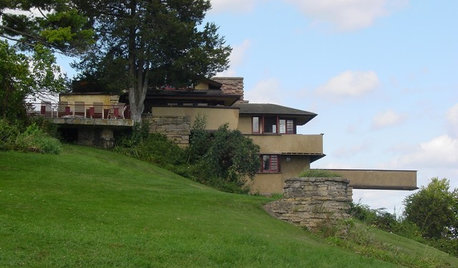RRD- it's that time of the year
anntn6b
15 years ago
Related Stories


KITCHEN DESIGNGet Ideas From This Year’s Top 20 Kitchen Tours
Smart storage, functionality for cooks and families, vintage touches and lots of personality mark your favorites of 2015
Full Story
EVENTSPreview Some Captivating Art in This Year’s London Design Festival
The Victoria and Albert Museum’s LDF exhibits are about reflection, wearable art, tiny insects and lots of Swarovski crystals
Full Story
KITCHEN DESIGN12 Ways to Have a Nicer Kitchen This Year
Give your kitchen a few upgrades and you'll love the time you spend there even more
Full Story
SHOP HOUZZShop Houzz: Organize Your Kitchen for the New Year
Resolve to create an efficient kitchen you’ll love to spend time in
Full Story0

PRODUCT PICKSGuest Picks: Go for a Golden New Year's Table
It's time to shine with gold plates, glasses, flatware and accessories perfect for a party
Full Story
HOUZZ TOURSHouzz Tour: A Hillside Home 14 Years in the Making
Time meant far less to this California architect than designing a home suited to the land
Full Story
DECORATING GUIDESRegency Style Shows Interiors a Grand Time
Lavish and hinting at the fantastical, regency designs are still influencing interior decorating 200 years after their birth
Full Story
MODERN HOMESHouzz Tour: 800-Year-Old Walls, Modern Interiors in Provence
Old architecture and new additions mix beautifully in a luxurious renovated vacation home
Full Story
HISTORIC HOMESTaliesin Celebrates a Landmark Day
This Wisconsin studio and retreat built by Frank Lloyd Wright in 1911 was where he designed many of his architectural masterpieces
Full Story










frogview00
odyssey3
Related Professionals
Barrington Hills Landscape Architects & Landscape Designers · East Rancho Dominguez Landscape Architects & Landscape Designers · Horsham Landscape Architects & Landscape Designers · Manhattan Beach Landscape Architects & Landscape Designers · Norton Shores Landscape Architects & Landscape Designers · Severn Landscape Architects & Landscape Designers · Walnut Landscape Architects & Landscape Designers · San Juan Landscape Architects & Landscape Designers · Anderson Landscape Contractors · Avocado Heights Landscape Contractors · Elmhurst Landscape Contractors · Fruit Heights Landscape Contractors · Lady Lake Landscape Contractors · Ponte Vedra Beach Landscape Contractors · Dale City Siding & Exteriorsmelissa_thefarm
barbarag_happy
frogview00
palustris
sammy zone 7 Tulsa
kaye
anntn6bOriginal Author